Walking onto a construction site without the right gear feels as thoughtless as jumping barefoot into a puddle. Construction workers are no strangers to inclement weather. When the heavens decide to open up, it's not just about getting drenched - it's about facing potential work hazards. The right rain gear doesn't just keep construction workers dry, it safeguards their lives. This guide aims to empower you, a diligent construction worker, with all you need to know when shopping for rain gear. We break down the do's and don'ts while choosing gear, treading through everything from specific features to keep an eye out for, to maintenance tips that can extend your gear's service. By the end of this guide, you'll possess the knowledge to equip yourself like an all-weather warrior, ready to face the elements at your worksite.
Importance of Rain Gear for Construction Workers
Working in construction has never been an easy task, especially when it comes to managing the unpredictable weather. Rain is frequently considered an unwelcome guest on the construction site. But with the right rain gear, daunting showers can become more manageable and a little less disruptive.
Safety First!
Undeniably, safety is the primary reason to properly equip construction workers with rain gear. It's not just about comfort; working during rain without proper gear can pose severe health and safety risks.
- Slips, Trips, and Falls: Wet surfaces often become slick, increasing the risk of accidents on the construction site.
- Hypothermia: Prolonged exposure to rain and cold can lead to hypothermia, a potentially fatal condition.
- Limited Visibility: Heavy rain can compromise visibility, increasing the chances of mishaps on-site.
Therefore, donning rain gear can significantly minimize these risks, thereby ensuring workers' safety and maintaining productivity levels.
The Joy of Comfort
Aside from safety, comfort is another crucial aspect of wearing appropriate rain gear. After all, if you are soaked and miserable, your productivity and focus are bound to decline. Quality rain gear should:
- Be waterproof, not just water-resistant
- Offer breathability to prevent overheating
- Include boots, gloves, and headgear for complete protection
- Be durable to withstand harsh conditions
Remember, comfort and safety go hand in hand. If your workers are comfortable, they're more likely to be alert, ensuring they maintain safer practices.
"Construction is an adventure, an adventure that may be vividly enhanced with the right rain gear," an anonymous worker once said.
Shop Smart
While shopping for rain gear, it's essential to consider the quality above all else. Look for equipment that provides both comfort and safety. A higher initial cost can save money in the long run by reducing accident rates and improving worker efficiency.
Consider the following factors to make an informed decision:
- Waterproofing: The number one priority should be that the rain gear is entirely waterproof.
- Durability: Durable gear can stand up to harsh conditions and last longer.
- Fit: Improper fitting gear can be uncomfortable and limit movement.
In conclusion, rain gear is indispensable for construction workers. It's not just about battling the rain; it's about worker safety, morale, and productivity. So the next time it starts to pour, make sure you and your crew are ready and equipped to handle it, rain or shine.
Do’s When Buying Rain Gear
Caught in a sudden downpour without the right gear can put a damper on your outdoor plans. Picking the correct rain gear can make all the difference between a gratifying adventure and a squelchy disaster. To help you make an informed decision, it's essential to think about several key factors. Here's what to remember when purchasing rain gear.
Check Water Resistance
When it comes to rain gear, not all items are created equal. Some are water-resistant, while others are completely waterproof. It's necessary to note the difference. A water-resistant jacket might repel light showers, but it won't keep you dry in a serious downpour. On the other hand, waterproof gear ensures nothing spoils a good time in the outdoors, even mother nature's worst. However, opting for waterproof items doesn’t mean that you should disregard breathability. In fact, gear having both, breathability and water resistance, strikes the best balance.
Focus on Durable Material
Durability often takes the backseat when buying rain gear, which shouldn't be the case. The outdoors can be rough, and you need gear that can stand up to the pressures. Opt for materials like nylon and polyester that are not only waterproof but also robust. Also, consider the construction of the garment. Seams should be sealed or taped to prevent water from seeping through.
Consider Safety Features
Safety takes precedence over style when you're dealing with the elements. Look for features like reflective accents, which make you visible in low light conditions. This safety feature is particularly beneficial if you'll be biking or running in the rain. A hooded rain gear piece is advantageous, providing additional protection for your head and neck.
Pay Attention to Comfort
No matter how efficient your gear is at keeping you dry, it's useless if you can't wear it comfortably. Consider the size, fit, and weight of the gear. Oversized gear can restrict movement and make it uncomfortable to carry for long periods. Therefore, try to find something that fits well and is lightweight for better mobility and comfort.
Look for Mobility
Finally, don't forget about mobility. Mobility might seem like an afterthought, but it's a crucial consideration. If the gear is too restrictive, it can make movement difficult, turning an enjoyable outing into an unwelcome challenge. Focusing on flexibility will make your adventurous rain-soaked outing a lot more bearable.
By taking these factors into account, you can choose rain gear that not only keeps you dry but also matches your outdoor demands. So, the next time you plan on braving the elements, keep these do’s in mind. Remember, the right rain gear can turn inclement weather into an added zest for your outdoor activities.
Don’ts When Buying Rain Gear
The thrill of outdoor adventures like hiking, backpacking, or simply traveling is enchanting until you find yourself caught in unwelcoming weather. One quick way to dampen your spirits (literally!) is by being unprepared for the rain. The solution? Arming yourself with apt rain gear. But, buying new rain gear is not as simple as it sounds; several factors should be considered to reach the right choice. Here are some common mistakes you should avoid when purchasing your rain gear, ensuring you remain dry and happy, no matter what the weather has in store.
Don't Compromise on Quality for Lower Price
Price tag seductions are common in the outdoor gear market. However, it's important to remember," You get what you pay for." High-quality rain gear might require a significant initial outlay, but consider it as a worthy investment for the future.
- High-quality material guarantees durability and longer gear life.
- Top-notch gear offers superior water resistance and protection.
- Investing in prime gear reduces the need for frequent replacements.
So, while it might be tempting to opt for cheaper options, they could end up costing more in the long run due to poor performance and durability.
Avoid Non-Breathable Material
The purpose of rain gear is not just to keep the rain out, but also to let sweat escape. Non-breathable material, although waterproof, might leave you soaked from the inside due to trapped perspiration.
- Opt for gear made of breathable material like Gore-Tex or eVent.
- These materials effectively keep the rain out and allow sweat and moisture to escape, ensuring you stay dry and comfortable.
Don't Ignore Weather Conditions
Overlooking the local weather conditions while selecting your rain gear is a faux pas. Every region experiences different types of rainfall and temperatures, demanding specific gear properties.
- If you're headed to a region with light, sporadic rain, a thin rain jacket might suffice.
- For areas with heavy or consistent rainfall, a sturdy, full-coverage rain suit becomes necessary.
Choose with consideration to the weather patterns you'll encounter.
Avoid Uncomfortable Gear
As a rule of thumb, avoid rain gear that impairs your movement and comfort. Mobility and flexibility are essential, especially when you're on an adventurous pursuit.
- Avoid gear that's excessively baggy or tight.
- Look for adjustable cuffs and waistbands that allow you to alter the fit.
- Opt for gear with ample ventilation options, such as pit zips or mesh-lined pockets.
Don't Forget about Size
A major blunder while buying rain gear is neglecting the sizing. It's more than just picking a small, medium, or large. Here's why,
- Rain gear must accommodate your underneath layers comfortably.
- Opting for a snug fit might render it useless when you're sporting additional layers of clothes.
- Consider your regular layering system while selecting the size of your rain gear.
In conclusion, remember that good rain gear seamlessly blends functionality and comfort. Being mindful of these don'ts will ensure you have a fulfilling outdoor experience, no matter what Mother Nature throws at you!
Features to Look for in Rain Gear
The selection of the right rain gear, such as raincoats, waterproof jackets, or even umbrellas, isn't a decision anyone should make in a hurry. The choice goes beyond mere aesthetics; it's not just about finding an item in a pretty color. Several features contribute to the functionality and usefulness of these items when the rain starts pouring. Here, we will consider five significant features to look for in rain gear: Breathability, Material Type, Protection Level, Comfort & Fit, and the difference between Waterproof vs. Water Resistant gear.
Breathability
Breathability is a significant feature your rain gear should possess. It refers to the gear's ability to allow water vapor (sweat) to escape. Gear with low breathability can cause discomfort due to trapped sweat, leading to dampness and a clammy feel, which you would want to avoid when you're already dealing with rain. For hiking or more strenuous activities, look for rain gear like Gore-Tex jackets that offer high breathability.
Material Type
A wrong choice of material can render a piece of rain gear entirely useless. The type of material used will determine the gear's durability, wind resistance, waterproofing, and comfortability. Noted materials include nylon and polyester, which provide excellent water resistance when treated properly. PVC and rubber are completely waterproof but can be heavier and less comfortable.
Protection Level
An essential aspect of rain gear selection is its protection level. This factor determines how well your chosen gear can defend you against rain, wind, and even cold, depending on what you need. A variety like a rain jacket with built-in insulation offers an extra level of protection against colder climates.
Comfort & Fit
A piece of rain gear could have all these great features and still be a regrettable purchase if it doesn’t fit correctly or is uncomfortable. Always ensure that you choose sizes that give you enough room to move while still providing adequate coverage from the elements. Look for features like adjustable hoods, cuffs, and waistbands, which can greatly enhance comfort and fit.
Waterproof vs. Water Resistant
Lastly, it's important to understand the difference between waterproof and water-resistant. Waterproof means no water gets in, no matter how intense the rain may be. On the other hand, water-resistant can withstand light to moderate rain but may succumb to heavy downpours. Your choice here would depend on the intensity of the rain you will likely be dealing with.
In selecting rain gear, place a high premium on these features. They will not only help to make your rainy days less daunting, but they will also ensure that you get adequate value for your money. Remember, the goal is to stay dry without compromising comfort.
How to Maintain Your Rain Gear
Taking care of your rain gear may not be the first thing on your agenda after a long day of trekking in the wilderness, but maintaining this essential equipment can significantly contribute to your comfort and safety during outdoor activities. Waterproof jackets, trousers, boots, or umbrellas keep you dry during downpours, so by investing a little time and effort into their maintenance, you can significantly extend their lifespan. Now, let's dive into how to clean and store your rain gear properly to ensure optimal performance!
Cleaning & Storing Rain Gear
One of the essential steps in maintaining your rain gear is cleaning. When dirt and grime build up on the exterior surface, it can cause the waterproof coating to deteriorate, allowing water to seep into the fabric. But how exactly should one clean rain gear?
- Use a gentle cleaning agent: Instead of potent detergents, use a mild soap or a specialized tech-wash to clean your gear. This will minimize the risk of damaging the waterproof coating.
- Avoid fabric softeners and bleach: These can breakdown the waterproofing compounds and compromise the equipment's functionality.
- Air dry: After washing, allow your gear to air dry. The heat from dryers can ruin the material, so it's better to hang your gear in a well-ventilated room out of direct sunlight.
As for storage, always ensure you keep your gear in a cool, dry place, away from direct sunlight. The UV rays can harm the fabric and the waterproof coating, causing it to degrade faster. It's also advisable to avoid storing your rain gear in sealed plastic bags as the moisture inside the bag could encourage mold growth.
Repairs & Replacements
Even with diligent care, at times, your rain gear may require repairs, or in some cases, a replacement. Small issues, like leaks or tears, can be easily addressed with a repair kit specifically designed for waterproof gear. After all, patching up a tiny injury is way better than having to buy a whole new kit, right?
If the gear is beyond repair, replacing it becomes necessary. But before making a new purchase, carefully check the product details to ensure you choose only high-quality products that offer excellent water-resistant features.
To sum up, rain gear, like any outdoor equipment, requires regular maintenance to keep working effectively. Your adventures and fun are directly related to your comfortability. So, by taking a few simple steps towards the cleaning, storing, and repairing of your rain gear, you can ensure you remain dry despite any sudden rain showers that nature may have in store!
Conclusion
From the moment the first raindrop hits, being equipped with the right rain gear is a crucial step for any construction worker. Acknowledging the importance of high-quality rain gear, understanding the do's and don'ts when it comes to buying it, and maintaining your gear to ensure its lifespan can’t be overstated.
In your pursuit of the best rain gear, consider the top-tier products of Hurricane Raingear. Handcrafted in the Pacific Northwest with 100% waterproof and rip-resistant materials, our rain gear is designed with a focus on comfort, mobility, and safety. We offer fully-tracked shipments, ensuring your gear lands in your hands right when you need it. Remember, your choice in rain gear can significantly impact your comfort, safety, and productivity on the job. Make your choice count.
Frequently Asked Questions
-
What are the essential factors to consider when buying rain gear for construction work?
When buying rain gear for construction work, it is important to consider factors such as durability, waterproofing, breathability, visibility, comfort, and proper fit.
-
Should I prioritize waterproofing or breathability in rain gear for construction work?
Ideally, you should prioritize both waterproofing and breathability in rain gear for construction work. Look for materials that offer a balance of keeping you dry in wet conditions while allowing sweat and moisture to escape to maintain comfort.
-
What type of visibility features should rain gear for construction workers have?
Rain gear for construction workers should have high visibility features such as reflective strips or fluorescent colors to ensure better visibility in low light or rainy conditions, enhancing safety on the job site.
-
Is it necessary to invest in high-quality rain gear for construction work?
Yes, investing in high-quality rain gear for construction work is crucial as it provides better durability, long-lasting waterproofing, improved breathability, and overall comfort. It ensures better protection from the elements and can withstand the demands of the construction environment.
-
Are there any specific care instructions for maintaining rain gear for construction work?
Yes, it is important to follow the manufacturer's care instructions for maintaining rain gear. Typically, it involves regular cleaning with mild detergent, avoiding harsh chemicals, and ensuring proper drying and storage to prolong the lifespan and functionality of the rain gear.



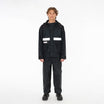



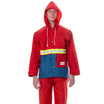


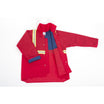

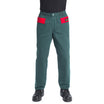



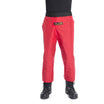






Leave a comment
This site is protected by hCaptcha and the hCaptcha Privacy Policy and Terms of Service apply.